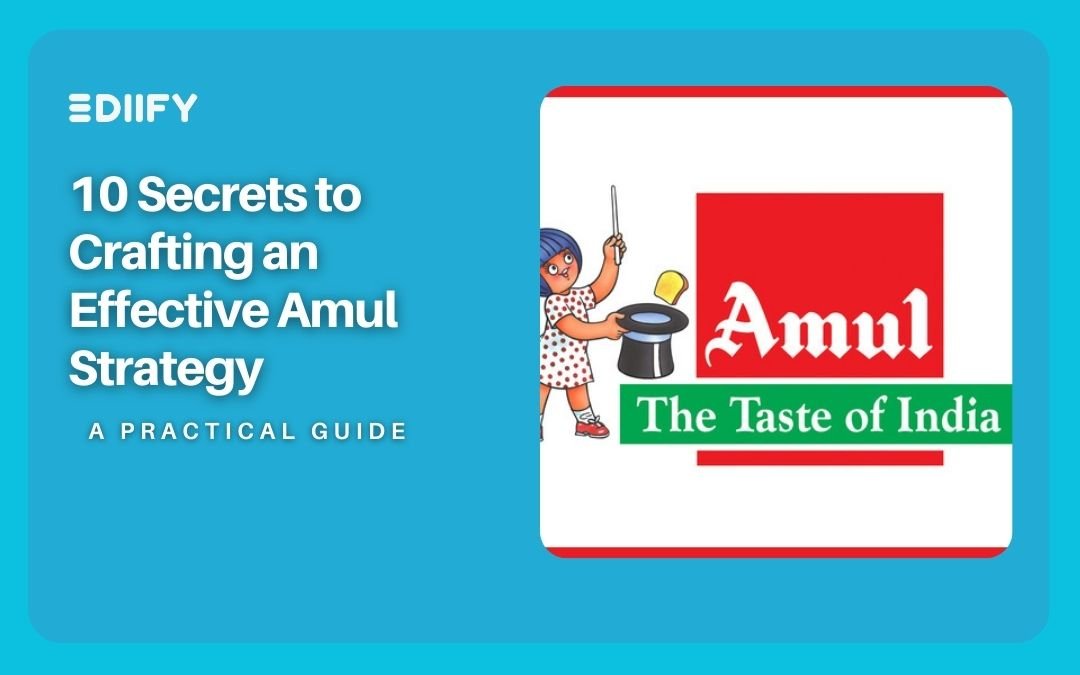Introduction:
In the expansive canvas of India’s dairy sector, one brand stands out for its unwavering dedication to quality, innovation, and a profound connection with consumers – Amul. Established in 1946, the Gujarat Cooperative Milk Marketing Federation (GCMMF), known as Amul, has etched its name as a household favorite synonymous with dairy excellence. Behind the endearing “Amul Girl” mascot lies a marketing strategy that has not only weathered the test of time but has also propelled Amul to the forefront of the dairy market. This blog delves into the intricacies of Amul’s marketing strategy, examining the key elements that have underpinned its lasting success.
Amul’s Marketing Strategy:

1. Brand Positioning:
Amul’s marketing strategy centers on a clear and relatable brand positioning – “The Taste of India.” This tagline encapsulates the brand’s commitment to delivering high-quality, delectable dairy products that resonate with the diverse tastes of the Indian consumer.
2. Product Diversification:
Amul has strategically broadened its product portfolio to cater to a wide spectrum of consumer needs. From the iconic Amul Butter to milk, cheese, ice cream, and more, the brand has successfully diversified its offerings, ensuring a presence in various segments of the dairy market.

3. Localized Marketing
Recognizing the importance of connecting with consumers at a local level, Amul employs region-specific marketing campaigns to ensure that its products are not only available but also tailored to the cultural preferences of different states and regions across India.
4. Iconic Advertising Campaigns:
The Amul Girl, with her clever and topical advertisements, has become a cultural icon in India. These ads, often commenting on current events and social issues, have not only maintained the brand’s relevance but have also forged a distinctive and memorable brand image.
5. Cooperative Model:
Amul’s cooperative model involves millions of farmers who also serve as the owners of the brand. This model not only ensures a continuous and high-quality supply of milk but also fosters a sense of trust and loyalty among consumers, knowing that they are supporting local farmers.
Conclusion:
Amul’s marketing strategy serves as an exemplar of how a brand can navigate the complexities of a diverse and dynamic market. By staying true to its roots, embracing innovation, and prioritizing the needs of its consumers, Amul has not only survived but thrived in an industry that has undergone significant changes over the decades. The brand’s unwavering commitment to quality, its iconic advertising, and its cooperative model have converged to create a winning formula that has endeared Amul to millions of consumers across India. As we relish the taste of Amul’s dairy delights, it is evident that their marketing strategy transcends mere product sales; it is about crafting a holistic experience that resonates with the hearts and taste buds of a nation.


